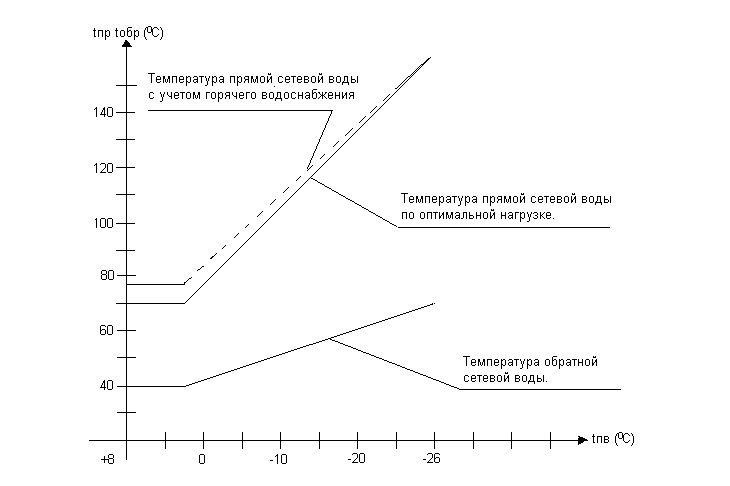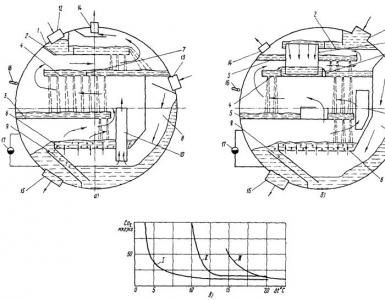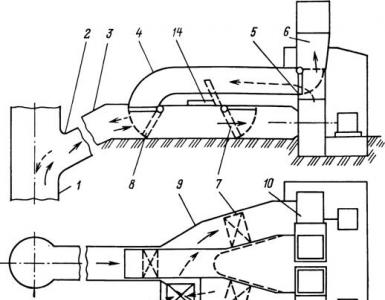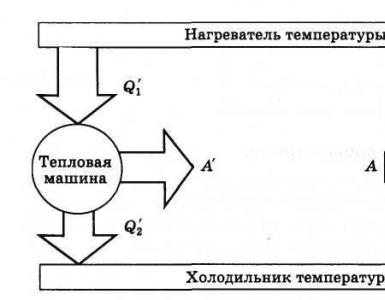Temperature chart for supplying coolant to the heating system
Each management company strives to achieve economical heating costs for an apartment building. In addition, residents of private houses are trying to come. This can be achieved if a temperature graph is drawn up, which will reflect the dependence of the heat produced by the carriers on the weather conditions on the street. Proper use of these data allows optimal distribution of hot water and heating to consumers.
What is a temperature chart
The same mode of operation should not be maintained in the coolant, because outside the apartment the temperature changes. It is she who needs to be guided and, depending on her, change the temperature of the water in heating objects. The dependence of the coolant temperature on the outside air temperature is compiled by technologists. To compile it, the values \u200b\u200bof the coolant and the outside air temperature are taken into account.
During the design of any building, the size of the heating equipment supplied in it, the dimensions of the building itself and the cross-sections of the pipes must be taken into account. In a high-rise building, residents cannot independently increase or decrease the temperature, as it is supplied from the boiler room. Adjustment of the operating mode is always carried out taking into account the temperature graph of the coolant. The temperature scheme itself is also taken into account - if the return pipe supplies water with a temperature above 70 ° C, then the coolant flow will be excessive, but if it is much lower, there is a shortage.
Important! The temperature schedule is drawn up in such a way that at any outdoor air temperature in the apartments a stable optimal heating level of 22 °C is maintained. Thanks to him, even the most severe frosts are not terrible, because the heating systems will be ready for them. If it is -15 ° C outside, then it is enough to track the value of the indicator to find out what the water temperature in the heating system will be at that moment. The more severe the outdoor weather, the hotter the water inside the system should be.
But the level of heating maintained indoors depends not only on the coolant:
- Temperature outside;
- The presence and strength of the wind - its strong gusts significantly affect heat loss;
- Thermal insulation - high-quality processed structural parts of the building help to keep heat in the building. This is done not only during the construction of the house, but also separately at the request of the owners.
Heat carrier temperature table from outdoor temperature
In order to calculate the optimal temperature regime, it is necessary to take into account the characteristics that heating devices have - batteries and radiators. The most important thing is to calculate their specific power, it will be expressed in W / cm 2. This will most directly affect the transfer of heat from the heated water to the heated air in the room. It is important to take into account their surface power and the coefficient of resistance available for window openings and external walls.
After all the values \u200b\u200bare taken into account, you need to calculate the difference between the temperature in the two pipes - at the entrance to the house and at the exit from it. The higher the value in the inlet pipe, the higher in the return pipe. Accordingly, indoor heating will increase below these values.
| Weather outside, С | at the entrance to the building, C | Return pipe, C |
| +10 | 30 | 25 |
| +5 | 44 | 37 |
| 0 | 57 | 46 |
| -5 | 70 | 54 |
| -10 | 83 | 62 |
| -15 | 95 | 70 |
Proper use of the coolant implies attempts by the inhabitants of the house to reduce the temperature difference between the inlet and outlet pipe. This can be building work to insulate a wall from the outside or insulate external heat supply pipes, insulate ceilings over a cold garage or basement, insulate the inside of a house, or several works performed simultaneously.
Heating in the radiator must also comply with the standards. In central heating systems, it usually varies from 70 C to 90 C, depending on the outside air temperature. It is important to bear in mind that in the corner rooms it cannot be less than 20 C, although in other rooms of the apartment it is allowed to drop to 18 C. If the temperature drops to -30 C outside, then the heating in the rooms should rise by 2 C. In other rooms it should also increase the temperature, provided that it can be different in rooms for different purposes. If there is a child in the room, then it can range from 18 C to 23 C. In pantries and corridors, heating can vary from 12 C to 18 C.
It is important to note! The average daily temperature is taken into account - if the temperature is about -15 C at night, and -5 C during the day, then it will be calculated by the value of -10 C. If at night it was about -5 C, and in the daytime it rose to +5 C, then heating is taken into account by the value of 0 C.
Schedule for supplying hot water to the apartment
In order to deliver optimal hot water to the consumer, CHP plants must send it as hot as possible. Heating mains are always so long that their length can be measured in kilometers, and the length of apartments is measured in thousands of square meters. Whatever the thermal insulation of the pipes, heat is lost on the way to the user. Therefore, it is necessary to heat the water as much as possible. 
However, water cannot be heated to more than its boiling point. Therefore, a solution was found - to increase the pressure.
It's important to know! As it rises, the boiling point of water shifts upwards. As a result, it reaches the consumer really hot. With an increase in pressure, risers, mixers and taps do not suffer, and all apartments up to the 16th floor can be provided with hot water without additional pumps. In a heating main, water usually contains 7-8 atmospheres, the upper limit usually has 150 with a margin.
It looks like this:
| Boiling temperature | Pressure |
| 100 | 1 |
| 110 | 1,5 |
| 119 | 2 |
| 127 | 2,5 |
| 132 | 3 |
| 142 | 4 |
| 151 | 5 |
| 158 | 6 |
| 164 | 7 |
| 169 | 8 |
The supply of hot water in the winter season must be continuous. Exceptions to this rule are accidents on heat supply. Hot water can be turned off only in the summer for preventive maintenance. Such work is carried out both in closed-type heating systems and in open-type systems.













